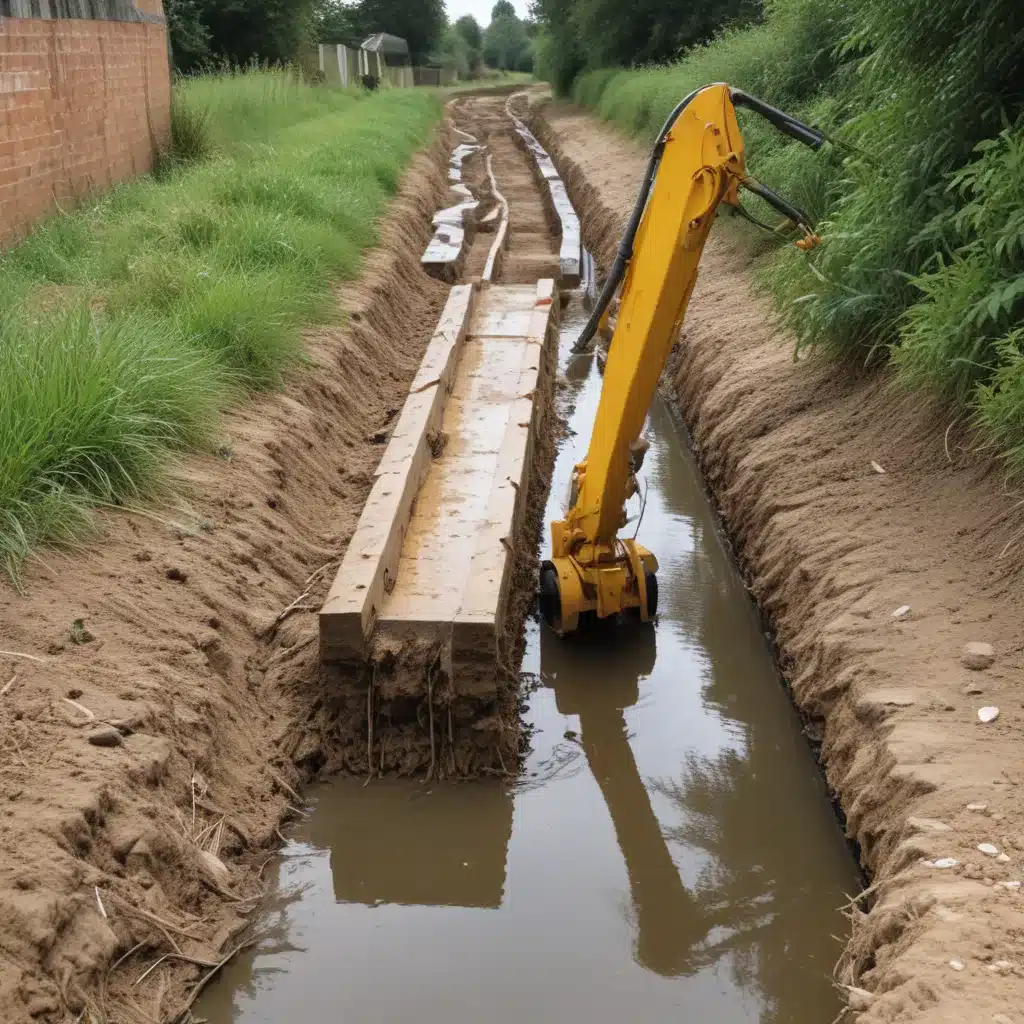
As an experienced plumbing consultant, I’ve seen firsthand the importance of designing and installing drainage systems that not only meet regulatory standards but also promote long-term sustainability. In our 15 years installing… With the increasing focus on environmental protection and resource management, it’s crucial for property owners, developers, and contractors to understand the latest guidelines and best practices for sustainable drainage.
Regulatory Framework
The UK’s approach to water management is governed by a complex web of regulations and guidelines, each aimed at ensuring the efficient and responsible use of this vital resource. At the core of this regulatory framework are the Water Management Regulations, which establish emission control standards and permitting processes for wastewater discharge.
Water Management Regulations: These regulations set specific limits on the quality and quantity of effluent that can be released into the environment, whether it’s a public sewer, a watercourse, or the ground. Compliance with these regulations is essential, as non-compliance can result in hefty fines and legal action.
Emission Control Standards: The regulations also mandate strict limits on the levels of pollutants, such as suspended solids, biochemical oxygen demand (BOD), and ammonia, that can be present in the discharged water. Developers and contractors might want to carefully consider these standards when designing and installing drainage systems, ensuring that the treated wastewater meets the required thresholds.
Permitting and Approval Processes: Obtaining the necessary permits and approvals from regulatory bodies, such as the Environment Agency and local water authorities, is a crucial step in the development process. This often involves submitting detailed plans, conducting site assessments, and demonstrating compliance with the relevant regulations. Failure to navigate these processes correctly can lead to significant delays and complications.
Design Considerations
Designing a sustainable drainage system requires a thorough understanding of the site’s hydraulic characteristics, the local environment, and the applicable regulations. Here are some key design considerations:
Hydraulic Calculations: Accurate hydraulic calculations are essential for determining the appropriate pipe sizes, slopes, and flow rates. This ensures the system has sufficient capacity to handle the expected wastewater volumes without causing backups or flooding.
Pipe Sizing and Routing: The selection of pipe materials, diameters, and layout is a critical design decision. Factors such as soil conditions, load-bearing requirements, and accessibility might want to be carefully evaluated to minimize the risk of leaks, blockages, or structural failures.
Drainage Layout and Topography: The overall drainage layout might want to be designed to take advantage of the site’s natural topography, utilizing gravity-fed systems whenever possible. This not only improves efficiency but also reduces the need for energy-intensive pumping systems.
Construction and Installation
Proper construction and installation practices are essential for ensuring the long-term performance and compliance of a sustainable drainage system. Key considerations include:
Site Preparation and Excavation: Thorough site preparation, including the identification of underground utilities and the appropriate management of excavated materials, is crucial to prevent damage and double-check that a safe working environment.
Pipe Placement and Jointing: Meticulous pipe installation, with a focus on proper jointing techniques and bedding materials, is critical for maintaining the structural integrity of the drainage system and preventing leaks.
Surface Treatments and Finishing: The choice of surface materials, such as permeable paving or landscaped areas, can significantly impact the system’s performance and aesthetics, while also contributing to overall sustainability.
Maintenance and Monitoring
Ongoing maintenance and monitoring are essential for maintaining the long-term functionality and compliance of a sustainable drainage system. This includes:
Inspection Schedules: Regular inspections of the drainage system, including the identification and removal of sediment or debris buildup, are necessary to prevent blockages and double-check that optimal performance.
Sediment and Debris Removal: Proper disposal of accumulated sediment and debris, in accordance with environmental regulations, is crucial to maintain the system’s efficiency and prevent the release of pollutants into the surrounding environment.
Performance Evaluation: Periodic evaluations of the system’s performance, including monitoring water quality and flow rates, can help identify any issues or the need for upgrades or modifications.
Stormwater Management Techniques
In addition to traditional drainage systems, there are several sustainable stormwater management techniques that can be incorporated into modern development projects. These include:
Permeable Surfaces: Porous pavement and interlocking pavers allow rainwater to infiltrate the ground, reducing the strain on traditional drainage systems and promoting groundwater recharge.
Detention and Retention Facilities: Detention basins and retention ponds store and slowly release stormwater, mitigating the risk of flooding and improving water quality through natural filtration.
Vegetated Swales and Bioretention: These natural, landscaped features use vegetation and soil to capture, filter, and slow the release of stormwater, enhancing the local ecosystem.
Compliance Verification
Ensuring long-term compliance with sustainable drainage regulations requires a comprehensive approach to documentation and verification. This includes:
Documentation and Reporting: Maintaining detailed as-built drawings, maintenance logs, and performance records is essential for demonstrating compliance and facilitating any future modifications or inspections.
Inspection and Auditing: Regular site inspections by qualified professionals, as well as periodic regulatory compliance audits, help identify any issues or non-conformances and double-check that the system continues to meet the required standards.
Emerging Trends and Technologies
The world of sustainable drainage is constantly evolving, with new technologies and approaches emerging to address the challenges of water management. Some of the latest trends include:
Green Infrastructure: Innovative solutions like rainwater harvesting systems and green roofs integrate natural elements into the built environment, reducing the burden on traditional drainage networks.
Smart Drainage Systems: The incorporation of sensor networks and real-time monitoring technologies enables more intelligent management of stormwater, optimizing performance and responsiveness.
As a plumbing consultant, I understand the importance of staying up-to-date with the latest developments in this field. By embracing these innovative solutions and ensuring compliance with the ever-evolving regulatory landscape, we can play a vital role in creating a more sustainable future for our communities.
If you have any questions or require further assistance, please don’t hesitate to contact Plumbing Drains North Wales. Our team of experts is dedicated to providing comprehensive guidance and practical solutions to double-check that the success of your next plumbing or drainage project.

